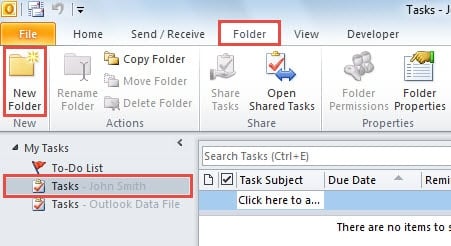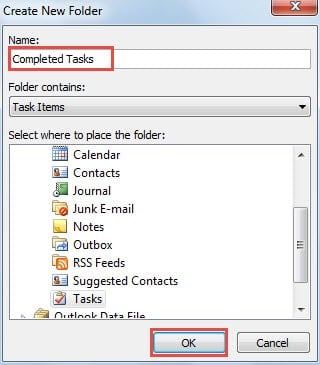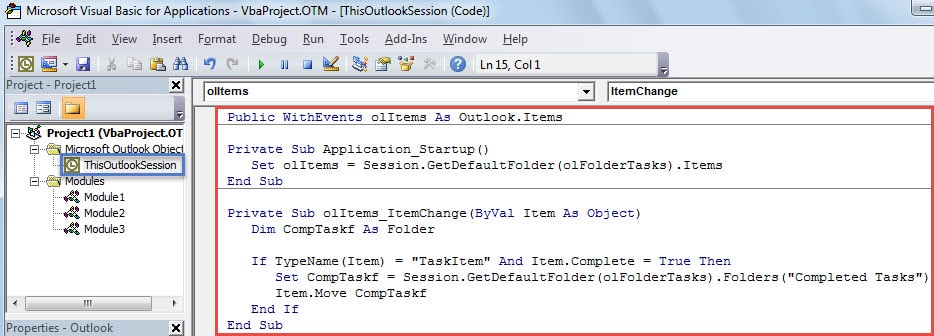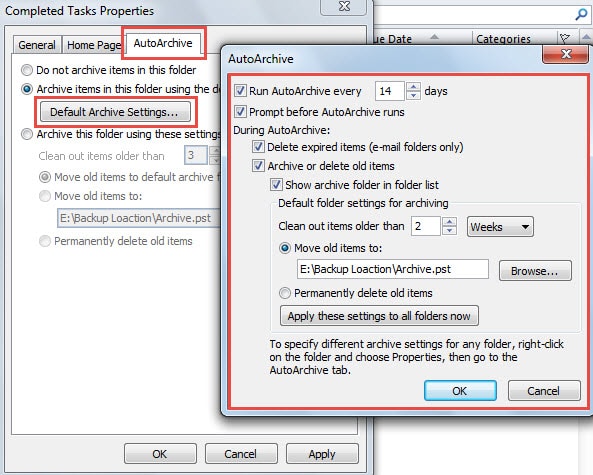Outlook can only auto archive the tasks according to their modified dates. But some people hope to configure Outlook to auto archive completed tasks only. This article will introduce a method to realize it just in 3 rapid steps.
As we all know, if we would like to auto archive all the Outlook folders, we can go to Outlook Options and change AutoArchive settings on “Advanced” tab, shown as the following screenshot:
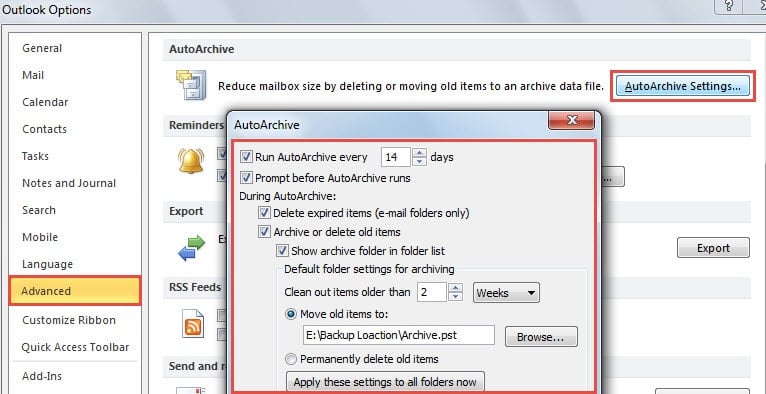
If you would like to auto archive specific folders instead of all, you can enable the AutoArchive feature only to the specific folders. Just right click the folder and opt for “Properties”. In the popup dialog box, shift to “AutoArchive” tab and change the settings, like the image below:
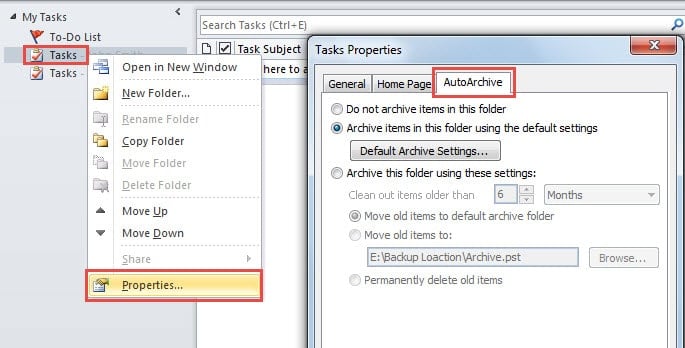
However, both methods mentioned above will work on basis of the item modified date. They cannot identify the other properties of the items, such as whether the task items are completed or not. Thus, here we will teach you how to auto archive the completed tasks only by 3 quick steps.
Step 1: Create a New Task Folder
- In the first place, turn to Outlook Task pane and pitch on the main task folder under the default Outlook data file.
- Then turn to the “Folder” tab and click on “New Folder” button.
- Lastly specify a name for the new folder, such as “Completed Tasks”, and then hit “OK” button.
Step 2: Auto Move Completed Tasks to the New Folder
- For a start, press “Alt + F11” key buttons, which will bring out the “Visual Basic” window.
- Then access the “ThisOutlookSession” project and copy the following codes into it.
Public WithEvents olItems As Outlook.Items
Private Sub Application_Startup()
Set olItems = Session.GetDefaultFolder(olFolderTasks).Items
End Sub
Private Sub olItems_ItemChange(ByVal Item As Object)
Dim CompTaskf As Folder
If TypeName(Item) = "TaskItem" And Item.Complete = True Then
Set CompTaskf = Session.GetDefaultFolder(olFolderTasks).Folders("Completed Tasks")
Item.Move CompTaskf
End If
End Sub
- Subsequently, you can proceed to sign this code as usual.
- Ultimately exit the “Visual Basic” window and change macro settings, namely enabling digitally signed macros only.
Step 3: Auto Archive the Tasks in the New Folder
- At the outset, go back to Outlook Task navigation pane.
- Then locate and right click on the new task folder, “Completed Tasks”.
- Next from the right clicking menu, choose “Properties” option.
- After that, in the subsequent “Completed Tasks Properties” dialog box, switch to “AutoArchive” tab and click on “Default Archive Settings” button.
- Finally you can change AutoArchive settings as per you requirements, like the picture below:
From now on, when you mark a task as complete, it will be moved to “Completed Tasks” folder automatically. And Outlook will auto archive the “Completed Tasks” folder according to your settings.
Necessities for Outlook Data Recovery
It is known that Outlook is prone to error and corruption. In order to ensure that our Outlook data is well-protected, we should make lots of precautions. Besides, we should also keep prepare for Outlook data recovery in that Outlook damage is inevitable with time going on. The first must-have is an up-to-date data backup. In addition, it is essential to get hold of corrupted Outlook file repair tool, such as DataNumen Outlook Repair. It can rescue your data effectively.
Author Introduction:
Shirley Zhang is a data recovery expert in DataNumen, Inc., which is the world leader in data recovery technologies, including repair SQL Server mdf db damage and outlook repair software products. For more information visit www.datanumen.com
